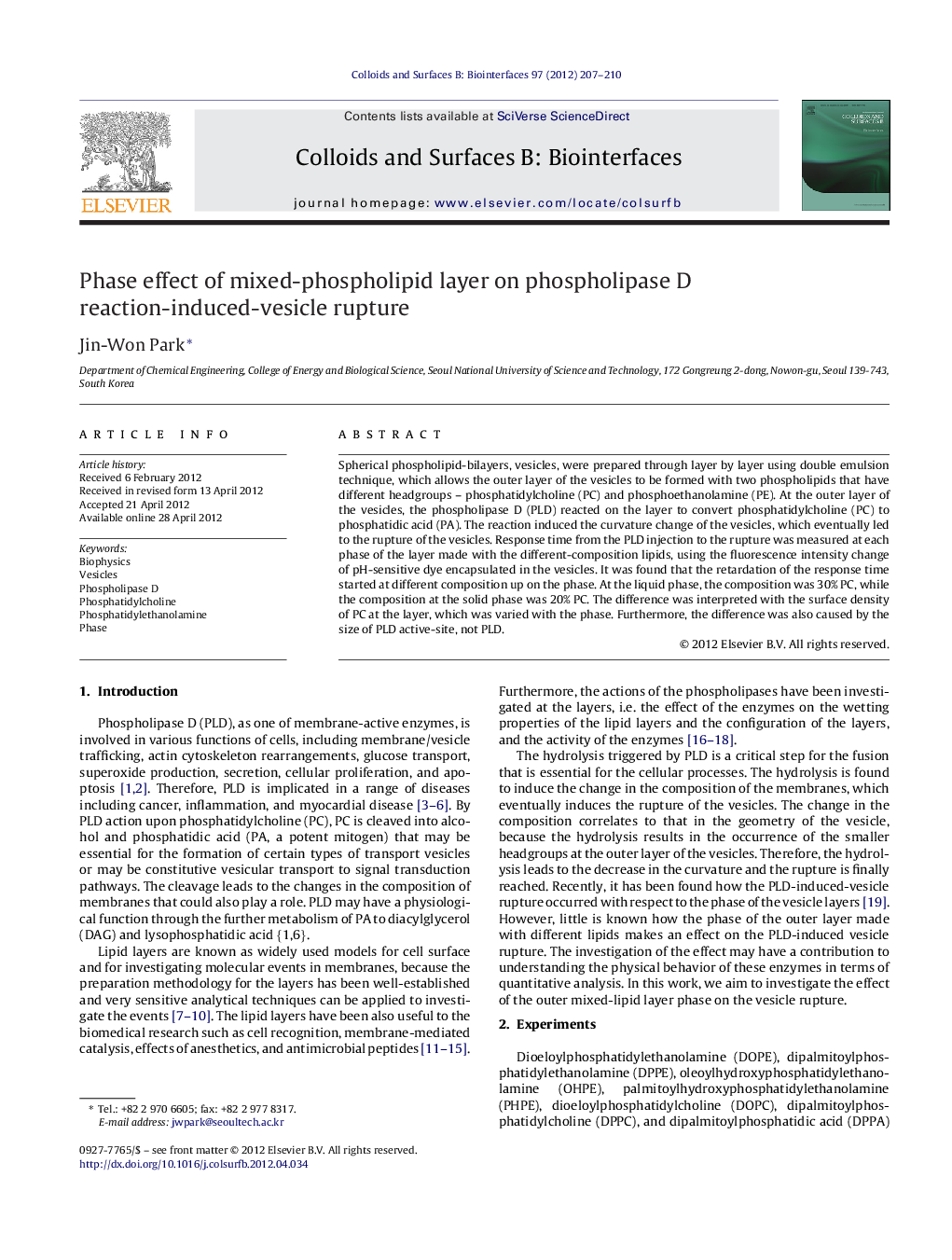| Article ID | Journal | Published Year | Pages | File Type |
|---|---|---|---|---|
| 600717 | Colloids and Surfaces B: Biointerfaces | 2012 | 4 Pages |
Spherical phospholipid-bilayers, vesicles, were prepared through layer by layer using double emulsion technique, which allows the outer layer of the vesicles to be formed with two phospholipids that have different headgroups – phosphatidylcholine (PC) and phosphoethanolamine (PE). At the outer layer of the vesicles, the phospholipase D (PLD) reacted on the layer to convert phosphatidylcholine (PC) to phosphatidic acid (PA). The reaction induced the curvature change of the vesicles, which eventually led to the rupture of the vesicles. Response time from the PLD injection to the rupture was measured at each phase of the layer made with the different-composition lipids, using the fluorescence intensity change of pH-sensitive dye encapsulated in the vesicles. It was found that the retardation of the response time started at different composition up on the phase. At the liquid phase, the composition was 30% PC, while the composition at the solid phase was 20% PC. The difference was interpreted with the surface density of PC at the layer, which was varied with the phase. Furthermore, the difference was also caused by the size of PLD active-site, not PLD.
Graphical abstractFigure optionsDownload full-size imageDownload as PowerPoint slideHighlight► The vesicles of the outer mixed-lipid layer were prepared at the different ratios of PC and PE. ► The PE was composed of lyso-PE and two fatty-acid tail PE, and the stability was evaluated for each PE condition. ► Under the identical stability condition, the composition effect on the PLD reaction response time was measured and analyzed in terms of the lipid density and the PLC active-site area.
